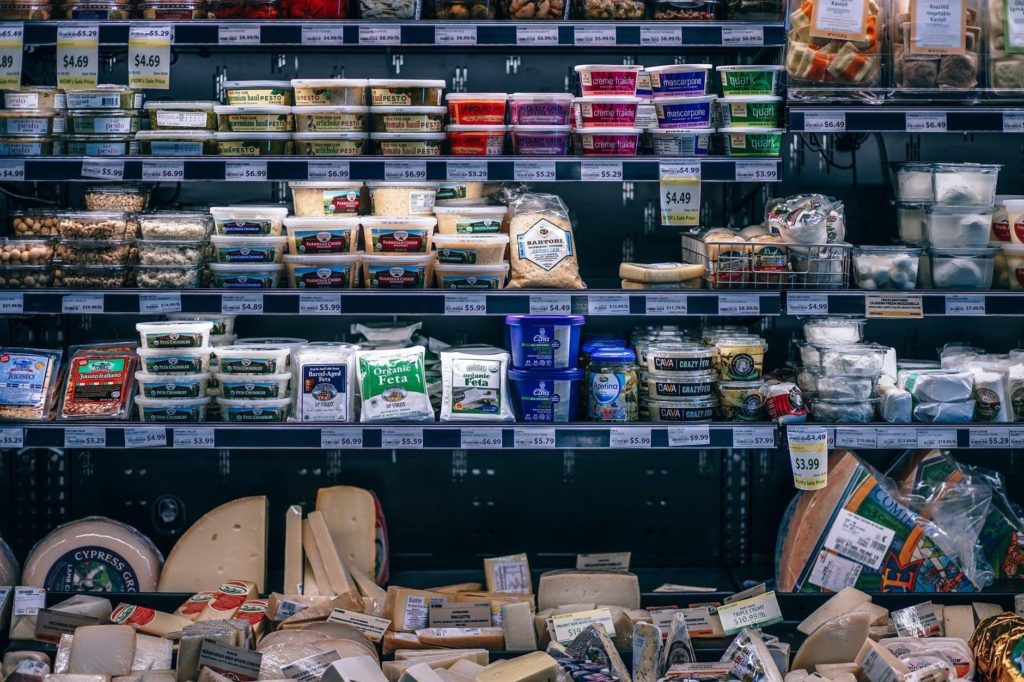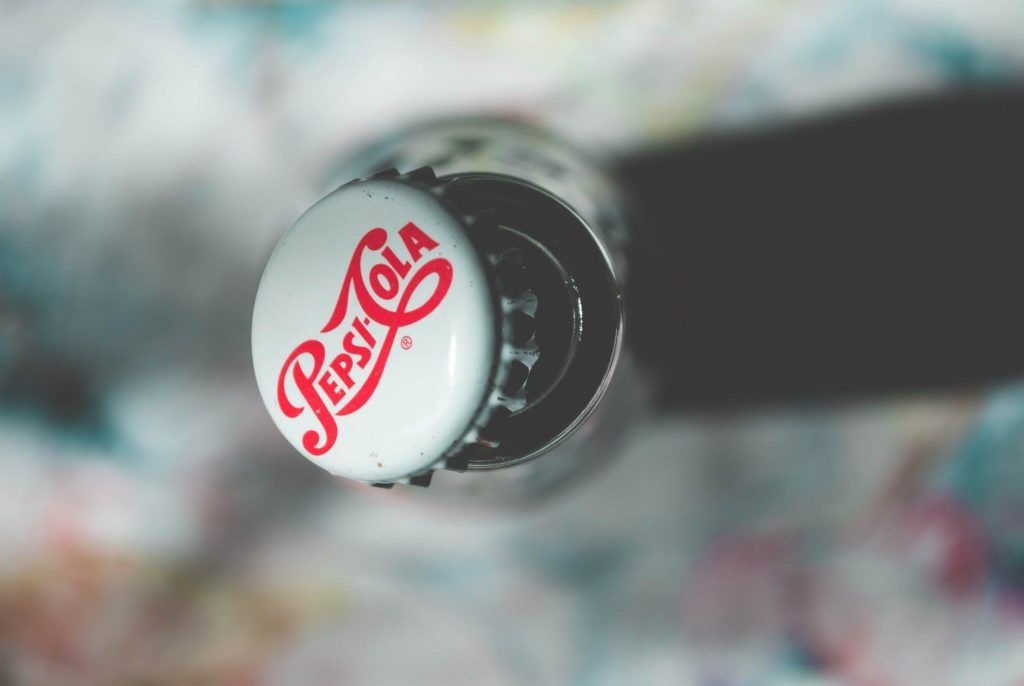Table of Contents
If you look closely towards advertising, the majority of marketing messages are related to FMCG products. Whether it’s wheat, Atta, cooking oil or food beverages, I guess FMCG products have the toughest time fighting for attention.
Since the majority of the FMCG products have similar functions to those of their competitors, a marketing strategy must be created to add value to the existing product that distinguishes one brand from another.
An FMCG brand is built by marketing additional values to the core qualities and function of the product. The marketing strategy you devise should highlight the difference between your brand & the competitors.
Developing an FMCG marketing strategy involves a deep understanding of consumer behavior and what emotional values a consumer refers to when choosing a particular brand.

An FMCG marketing strategy should be built using these 7 factors:
- Quality
- Positioning
- Repositioning
- Well Balanced communication
- Being first
- Long-term perspective
- Internal marketing
Let’s discuss each of these points individually
Quality Of Your FMCG Product
An FMCG company marketing its product should first exaggerate the quality of the product. FMCG products with superior quality gain maximum share in the market as compared to its inferior rivals.
It is important for a marketer to understand how a consumer judges a product. Most consumers don’t go into a detailed analysis to judge the quality of the product. You must know what quality of the product is highly preferred by your target customers. The marketing strategy you create must try to highlight these quality factors.
Positioning Of Your FMCG Product
Creating a unique position for your FMCG product involves a careful choice of the target market and create a unique differential image in the minds of the consumer. This can be achieved through brand name, service, design, guarantee, packaging and delivery.
Creating a unique position in the market will require you to create a marketing strategy involving two or more factors together. Positioning is an opportunity for an FMCG company to communicate its values to its customers promising what it can achieve for them i.e the functional needs and what it means to them i.e. emotional needs.
But customer’s functional and emotional needs change quickly with demographics like age, gender, source of income, etc. Hence you must come with a strategy to target a specific audience. Don’t try to dilute your brand identity to make it attractive to a larger segment. You should resist this temptation. Marketing strategy attracting a specific audience could fetch you a premium price since your FMCG product is highly valued by the customers.

Repositioning Your Brand
As market changes, so do consumer behaviour. With these changes, new opportunities arise. Repositioning of your brand image is necessary and you need to have a marketing strategy in place to render relevant with the present marketing conditions.
Most of the times the changes are gradual and a company can change its communication strategy with time. But if the changes are sudden and the company finds itself out of tune with market conditions, the company has two marketing options:
- You may start targeting a different customer segment where its positioning plank is still relevant.
- Change its communication strategy drastically to suit the sudden changes occurred.
Many FMCG companies are guilty of changing their brand position unnecessarily. A brand repositioning should only be done after thorough customer research and the capability of the company. Your marketing strategy should always highlight your company values. Failing to do so might confuse the user about what you are really capable of doing for them.
Building A Well-Balanced Communication Strategy
The purpose of brand communication is to make customers attach to the brand on an emotional level. Your marketing strategy must include your ideas about communication and the platforms you are planning to utilize.
The communication strategy includes creating awareness, projecting a personality and building a perception among customers. The brand theme needs to be marketed by advertising, sales personnel, public relation and promotion campaigns.
The whole purpose of your marketing strategy is that customers should start considering your FMCG product a part of their daily lives. Your communication strategy should provide opportunities for consumers to interact with your brand.
Sponsoring an event which your customer feels strongly will make customers feel proud of their association with the brand.
The idea is that your FMCG company should be relentless in communicating your brand values to its target customers and never miss the opportunity to impress them.

Being First In The Market
Pioneer brands are more likely to be successful than the follower brand. Being first gives you a clear opportunity for your brand to create a space in the customer’s mind. The pioneer brand gets an opportunity to shape up customer expectations.
All the following brands will be compared with the benchmark set up by the pioneer brand. But it requires sustained marketing efforts and the strength to withstand competition.
The pioneer gets enough time to build their customer segment so that late entrants would not get a chance to target those customers. Pioneer product should also update their product so that the competitors do not find the unmet needs to target customer from your set base.
Pioneer should resist the temptation to serve the whole market with a common product. All your marketing strategies must be pointed towards your set target audience. Your competitors will tweak some features from your current product and try to serve a different customer base. You should not try to capture the market unless you are sure that you can update the features by keeping your set customer base satisfied.
Keeping A Long-Term Perspective
Creating awareness, brand loyalty, communicating your values and building a loyal customer base. When it comes to creating an FMCG marketing strategy, there is nothing short term. There must be consistent marketing efforts to keep your brand in customer’s vision. Cutting your marketing investment may not affect the sales immediately, but it won’t be long enough that your product starts eroding from your consumer’s memory.
Investment in a brand never goes waste. The strength of an FMCG product depends on the connection it makes with its customers over a long period of time. Connections take time to build, any association your brand has with the customer should ensure that you are connecting with the customers.
The brand needs to perform consistently before customers start associating with the brand. And companies need to make sure that the trust is not breached either due to internal errors or external factors. You need to have a marketing strategy in place in case some unfortunate event starts tarnishing your brand.

Internal Marketing
Many FMCG products are consumer-centric. The major marketing strategies are built to attract consumers. But for a service based company, training and communicating your brand values to your internal staff is necessary. Whenever the customer comes in contact with your internal staff, the customer must experience the brand values you are trying to communicate.
For this, the internal staff must be trained and employees should understand as what type of interaction will reinforce the brand values. Employees must be told what a consumer is expecting from your FMCG brand and try to fulfill those expectations. Each individual must be briefed with their roles in brand building.
6 Stages A Brand Go through To Fulfill Their Promise
As said earlier, the marketing strategy needs to be built keeping long-term goals in mind. It will take years before you actually start connecting with the customers. There are generally 6 stages an FMCG product go through before they fulfill their promise. All these 6 factors represent brand values which your company is trying to highlight
Quality
This is the first criteria a customer notices while purchasing an FMCG product. Product with superior quality gains a large market share when compared to the inferior ones. The quality you provide must be the best in the industry. It also includes how you handle product innovation.
Sales & Service
Your sales network represents how your company works on the ground level. The sales representative and customer management must propagate your core brand values. Your salesman is the face of the product you are trying to sell.
Excellent service
With changing consumer behavior, people today expect an excellent pre and post sales service. Your service care centres must be trained to responsibly handle any complaints and requests from the consumer.
Integrated market and corporate identity
To be a market leader, your FMCG company must be a leader in innovation, packaging design, marketing strategy & people management. All these values add its own points in taking your FMCG product to new heights.
Brand Management
You must have an excellent strategy in place to always project your values in the market. Your brand is not just one product, it is the overall quality of the product, customer service, innovation, marketing strategy and how seriously you adhere to the values you are trying to project.
Value Maintenance
The value you are trying to project in the market should not dilute with the passage of time. You should be consistent in your quality, pricing, innovation, and services. Consumers are emotional beings and upholding the promises you make is a good way to keep your customers satisfied for a long time.
Summary
FMCG products can create a deep connection than any other product in the market. Since the majority of FMCG products are of everyday use, marketing strategies must be built to convey how your product could solve their daily problems and their emotional needs. With sustainable marketing efforts, your product could become a member of every household.



